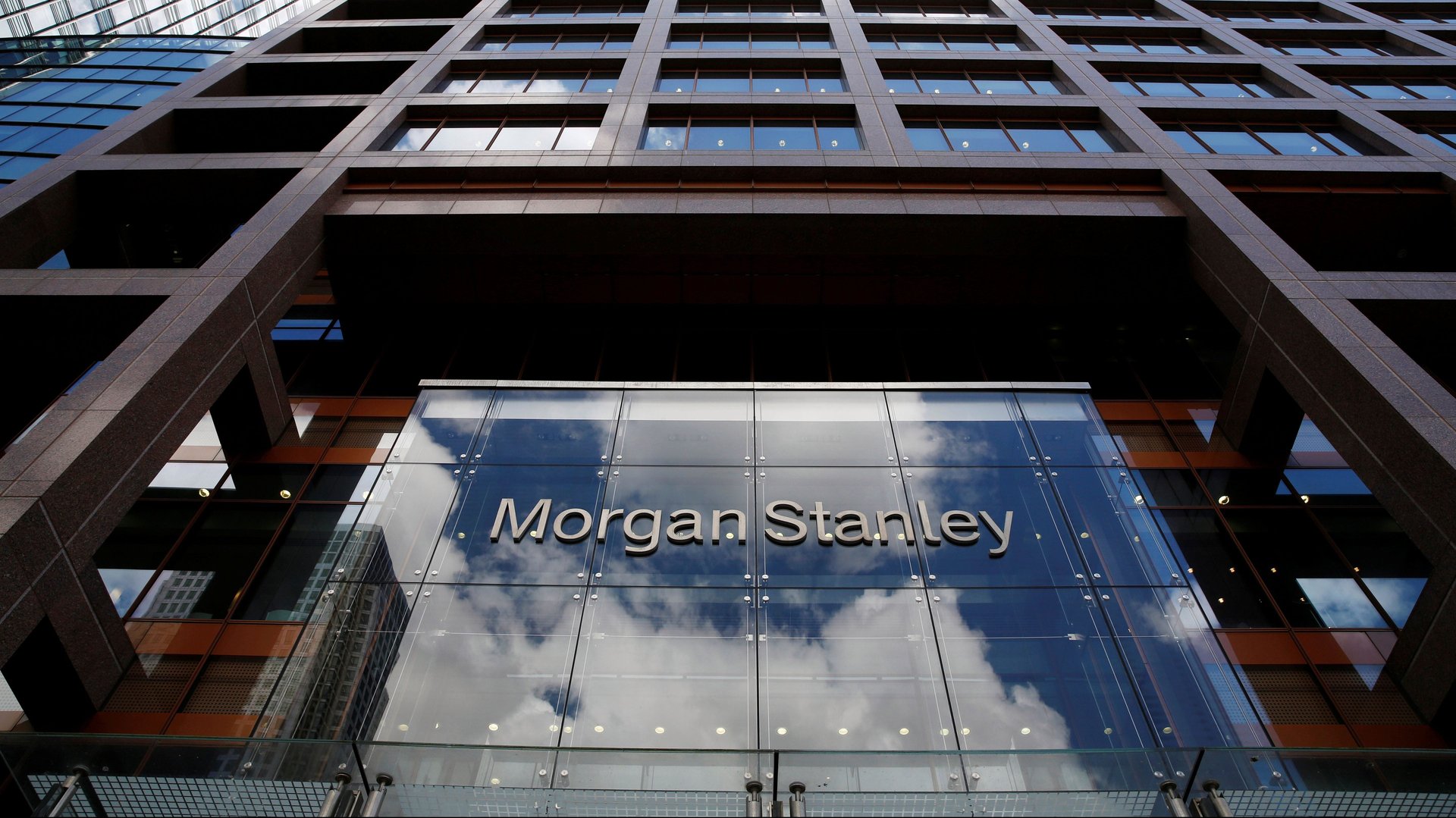How Morgan Stanley wooed Uber for its IPO business
Uber is taking Morgan Stanley to the prom.


Uber is taking Morgan Stanley to the prom.
The ride-hailing company picked Morgan Stanley to lead its coveted 2019 public offering, Bloomberg reported Dec. 11 (paywall). It’s a big win for the bank. Uber’s IPO is expected to be the biggest listing of the year, valuing the company at up to $120 billion, and one of the largest ever in the US. Banks that underwrite IPOs typically earn fees equal to 3% to 5% of the gross proceeds on the offering, according to Bloomberg.
Uber filed confidentially for a public offering on Dec. 6, the same day that competitor Lyft announced it had confidentially submitted a draft registration statement to the US Securities and Exchange Commission. Both companies appear to be racing toward a debut in the first half of 2019 amid uncertainty over the state of global financial markets.
Banks have been eyeing Uber’s IPO business since the rides company leapt to a multibillion-dollar valuation in 2013, becoming one of Silicon Valley’s original “unicorn” startups. Goldman Sachs has led the most US-listed IPOs to date in 2018, Bloomberg reported, and may also have a hand in Uber’s debut, but Morgan Stanley and chief technology banker Michael Grimes have become key advisers for many startup offerings.
While it’s hard to know what exactly tipped the scales in Morgan Stanley’s favor, here are several ways the bank cozied up to Uber over the last five years.
Added Uber to its corporate travel policy
In November 2014, Morgan Stanley was one of the first companies to add Uber to its corporate travel policy, an occasion it marked with an official press release. “Employees expressed their strong affinity for the convenience Uber offers them in their personal lives and wanted that flexibility for their business travel needs as well,” Jeff Brodsky, the bank’s chief human resources officer, said at the time.
It’s funny that was a radical step as recently as four years ago. As of the third quarter of 2018, Uber was the most frequently expensed brand among businesses in North America tracked by expense management firm Certify. Uber accounted for 11% of total transactions (that’s number of transactions, not dollar volume), with Starbucks a distant second at 4%. Uber captured 73% of transactions in the ground transportation category, and UberEats took 26% of expenses in the food delivery category.
Created a fund for wealthy clients to invest in Uber
By February 2016, Uber’s valuation had soared above $60 billion. Around that time, the New York Times reported that Morgan Stanley had created a special fund (paywall) to offer wealthy clients a shot at investing in Uber.
The fund, New Riders L.P., offered investors a stake in $475 million of preferred stock in Uber. New Riders L.P. came with a 290-page offering document, but provided little information on the company’s finances. Basic numbers like revenue and expenses weren’t shared. Morgan Stanley even warned it had “conducted limited due diligence with respect to the company” and hadn’t “independently verified the accuracy or completeness of such information” in the offering document. The fund seemed to prioritize making Uber happy over protecting Morgan Stanley’s investors.
Had its top tech banker drive for Uber
Top technology banker Michael Grimes “moonlighted for years as a driver” for Uber, the Wall Street Journal reported (paywall) this October. “That side hustle—hardly necessary, given his multimillion-dollar Wall Street salary—may help Morgan Stanley win a role on the most hotly anticipated stock-market debut in years,” the Journal wrote on Oct. 18.
Where did Grimes drive, and for how many trips? Did he also try Lyft? What’s his Uber driver rating? Such details weren’t discussed in the Journal story, which mainly painted Grimes as a man willing to do whatever it takes to land a big deal. But, details. Morgan Stanley apparently isn’t big on them when it comes to Uber. If the company’s IPO decision is any indication, it’s working!